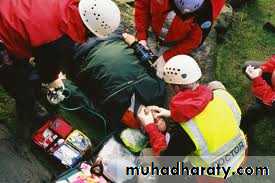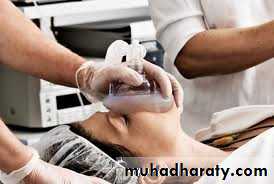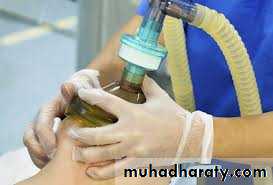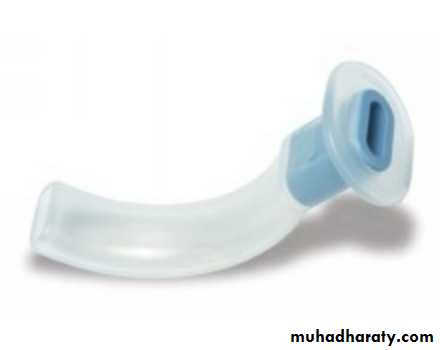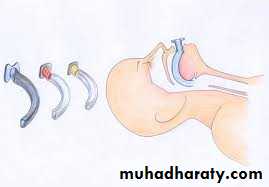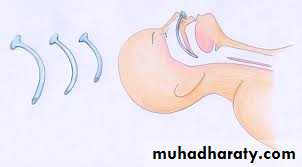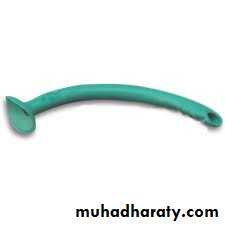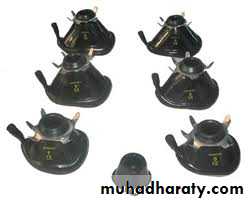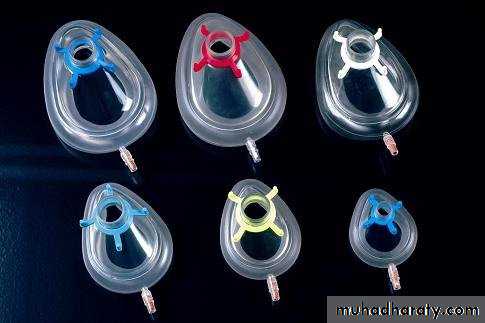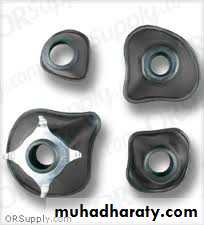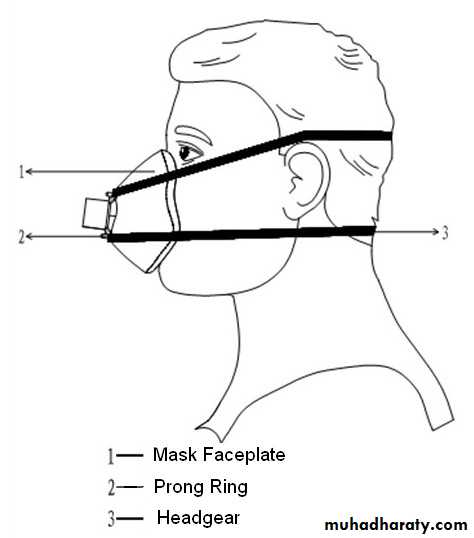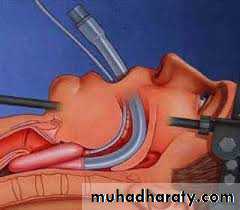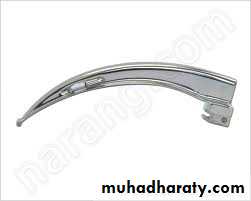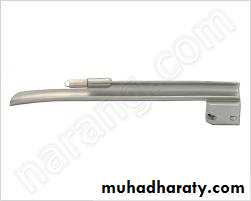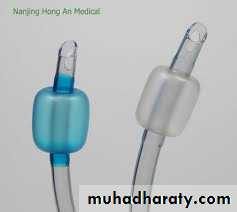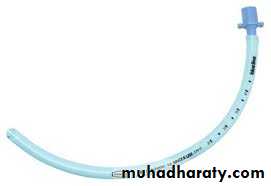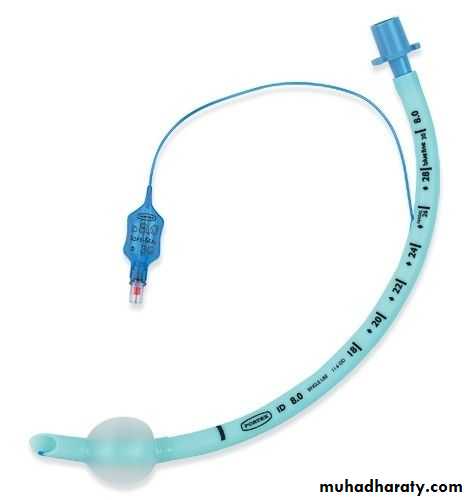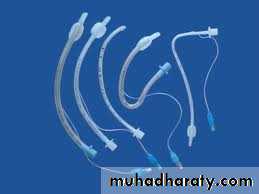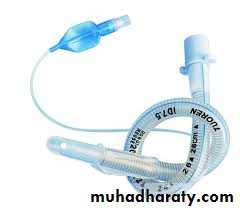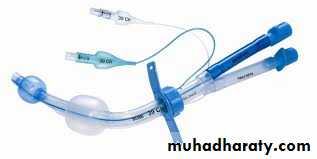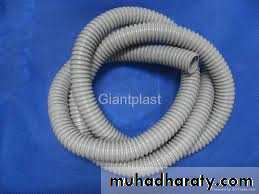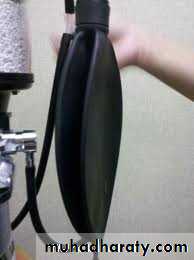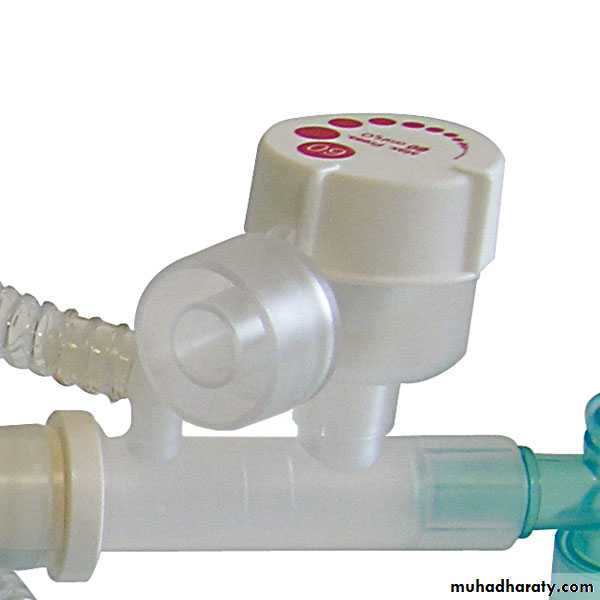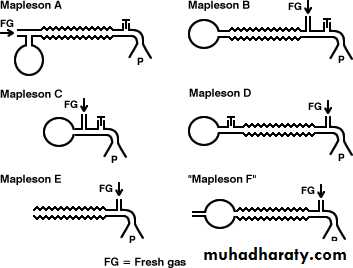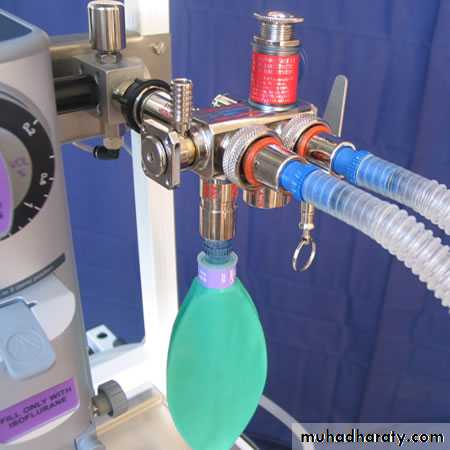Airway control
• Securing control of the airway is one of the most important skills required of the anaesthetist.
• Whether for elective or emergency surgery, and whether the need for airway control has been predicted or not, the safety of the patient depends on the anaesthetist’s ability to intervene to ensure adequate oxygenation and ventilation should the need arise.
Equipment and techniques for routine airway management
Before embarking on general anaesthesia, the equipment required should be to hand and its correct function checked and should includes:• source of pressurized oxygen (plus bag-valve-mask or anaesthesia circuit)
• selection of face masks
• selection of oropharyngeal and nasopharyngeal airways
• high-flow suction with suction catheter
• two laryngoscopes
• selection of tracheal tubes
• selection of laryngeal mask airways
• Magill’s forceps
• sterile lubricating gel
• ties and padding to secure tracheal tube
• gum-elastic or other suitable bougie.
Non-relaxant anaesthesia
If relaxant anaesthesia is not required (e.g. for body-surface surgery in the patient not at risk for aspiration) then inhalational anaesthesia via a face mask is appropriate.
Supporting the airway
• Once the patient is unconscious it is necessary to support the airway.• There is a tendency for the airway to become partially obstructed at this stage because the tongue falls back against the posterior wall of the pharynx.
• So the anaesthetist extend the head on the neck at the same time as applying a jaw thrust and opening the mouth.
• If it is impossible to open the airway using these techniques, an artificial airway is required: the oropharyngeal and the nasopharyngeal airway
Airway devices
• The oropharyngeal (Guedel) airway is a curved tube that has a flanged and reinforced oral end.• The nasopharyngeal airway is a less stimulating intervention. It is a soft curved tube with a flanged nasal end and a bevelled pharyngeal end.
Face mask
•• for brief procedures.
• with or without airway adjuncts.• For longer procedures,the standard mask can be supported by a harness.
• It is now more common
to insert a laryngeal mask
airway for such procedures.
The laryngeal mask airway (LMA)
• It was designed to provide a connection between the artificial and anatomical airways in a less invasive way than with a tracheal tube, and yet with greater convenience and reliability than a conventional face mask.• It consists of a silicone bowl surrounded by a thin-walled elliptical ring that can be deflated to form a thin wedge shape, and which when inflated in the space posterior to the pharynx creates a seal around the laryngeal aperture.
Relaxant anaesthesia
Anaesthesia requiring a muscle-relaxant technique most commonly requires tracheal intubation.Indications for relaxant techniques and/or intubation
• provision of clear airway• airway protection from blood, oral or gastric secretions
• facilitation of suctioning of airway
• prone or sitting or other position, airway inaccessible
• Head and neck, abdominal, thoracic surgery
• likelihood of postoperative respiratory support
• administration of positive end-expiratory pressure
The laryngoscope
• consists of:
• handle (which houses the batteries)
• detachable blade, which has a screw-in bulb.
• Alternatively, the bulb may be in the handle, and a fibre-optic bundle transmits the light to the blade.
• Two basic types of laryngoscope are available:
• curved-blade (Macintosh)
• straight-blade (Miler)
Endotracheal tubes (ETT)
• an extensive range of tracheal tubes is available.• Tracheal tubes are usually inserted via the mouth, or if necessary via the nose (e.g.for intraoral surgery).
• Tube size is measured by the internal diameter, ranging from 2.5 mm to about 10 mm in 0.5 mm increments.
• The tube is connected to the anaesthetic circuit at the proximal end with a tapered connector of suitable size
• The distal end is bevelended and may have, in addition to the end hole, a side opening (Murphy eye) to allow passage of gas should the bevelled end be occluded by abutting on the tracheal wall.
Endotracheal tubes (ETT)
• They may be:• Uncuffed (plain) tubes which are used in children
• Cuffed , which provides a seal enabling positive-pressure ventilation and preventing aspiration of secretions into the airway.
• Preformed ETT
• Armored ETT
• Double lumen ETT
Breathing Systems
• A ‘breathing system’ is the name given to apparatus that delivers and removes gas and vapour to or from a patient.
• The three main functions of the breathing system are:
• to supply adequate oxygen
• to remove carbon dioxide
• to supply adequate inhalational anaesthetic agent
• Essential components of a breathing system are :
• Tubing (hose): which is corrugated to prevent kinking• Reservoir bag: this stores fresh gas when the patient is exhaling and estimate the respiratory rates during inspiration.
• APL valve: this is a one-way valve.
Mapleson circuits
• In 1954 Mapleson described and analyzed five different anesthetic systems, and they are classically referred to as Mapleson systems and designated A to E.• Thenafter , Willis et al added the F system to the five original systems.
Humphrey ADE system
• It is one of a number of hybrid systems that has become popular.• It is a low-flow multipurpose system that appears to combine the best of the Magill (mapleson A), Bain (mapleson D) and T-piece (mapleson E) systems but not their disadvantages.

